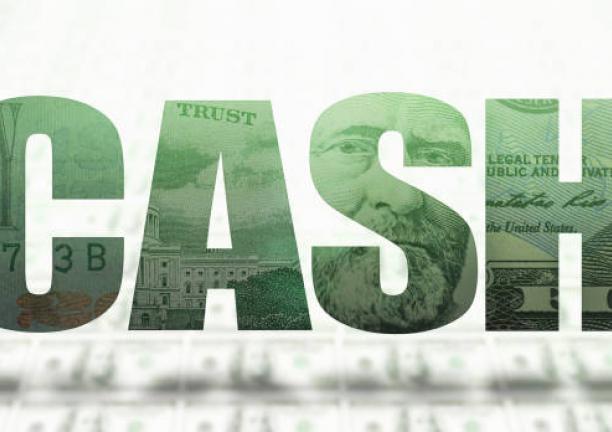October 31, 2018 – The Forum for Sustainable and Responsible Investment (USSIF) released its 2018 Biennial Foundation’s “Report On US Sustainable, Responsible and Impact Investing Trends.” The Report, based on data collected and analyzed through the beginning of 2018, disclosed that assets linked to sustainable, responsible and impact investing (SRI) strategies have reached $12.0 trillion, up 38% percent from $8.7 trillion in 2016. According to USSIF, this represents one in four dollars out of the $46.6 trillion in total assets under professional management in the United States. The report notes that “asset management firms and institutional investors are addressing a diverse set of environmental, social and governance concerns across a broader span of assets than in 2016. Many of these money managers and institutions, concerned about racial and gender discrimination, gun violence and the federal government’s rollbacks of environmental protections, are using portfolio selection and shareowner engagement to address these important issues.”
Much of this growth, per the report, is driven by asset managers, who now consider environmental, social or corporate governance (ESG) criteria across $11.6 trillion in assets, up 44% from $8.1 trillion in 2016. The top three issues for asset managers and their institutional investor clients are climate change/carbon, tobacco and conflict risk. While we are challenged to understand the absolute numbers, especially when juxtaposed against mutual funds and ETFs that are classified as sustainable investments which stand at only $312.6 billion as of September 30, 2018 and account for a small 1.5% fraction of combined long-term mutual fund and ETF assets, the overall increase reported by USSIF is consistent with the growing attention directed at SRI investing linked to a range of strategies and practices encapsulated in SRI, from values/faith-based and social investment strategies, exclusionary practices, ESG integration, impact/thematic investing, to shareholder engagement and proxy voting. Regardless of the top line numbers, however, we believe that perhaps as much as 50% of the assets sourced to SRI strategies are likely linked to exclusionary practices, such as tobacco, weapons and alcohol, to mention just some.
Among money managers, social factors were incorporated into investment decisions at a level slightly more than environmental and governance criteria. Social criteria incorporation by money managers increased by 39% from 2016 to $10.8 trillion. That said, tobacco-related restrictions saw the greatest growth of any ESG criteria, increasing 432% from 2016 to $2.9 trillion.
The Report’s Executive Summary further discloses that $8.6 trillion of the assets, or 74%, were managed on behalf of institutional investors and $3.0 trillion were managed on behalf of individual investors. A total of $2.6 trillion, or 22%, were managed through registered investment companies such as mutual funds, exchange-traded funds, variable annuities and closed-end funds. Here is where our view starts to diverge from USSIF. According to our research, based on Morningstar data, at the end of January 2018, assets sourced to sustainable investing strategies of mutual funds, ETFs and ETNs stood at $264.8 billion, including $257.1 billion in mutual funds and $7.7 billion in ETFs and ETNs. While this number excludes variable annuities and closed-end funds, we doubt that the difference of $2.3 trillion is explained by these investment products alone.
USSIF’s report will receive much coverage in the weeks and months to come and the base-line number of $12 trillion in SRI assets will be widely quoted until the next USSIF survey is published. While we believe SRI has and will continue to gain traction, it likely overstates the nature of the changes taking place across the SRI investment landscape and the resultant impacts.
October 31, 2018 – In a post on BlackRock’s blog entitled Food for Thought: Why ESG Ratings Matter, Martin Small, the Head of U.S. iShares, makes the case for the important role of environmental, social and governance (ESG) ratings in assessing sustainable corporate behavior that can be used to supplement traditional metrics, like book value, to assess how well firms manage idiosyncratic as well as systemic risks. We agree that ESG ratings are useful in investment decision making to assess company level risks and opportunities in a consistent and systematic manner, even as ESG ratings still offer limited coverage and are subject to variations, in some cases significant variations, in their methodologies, quality and relevance (see also October 15 below). We expect coverage and the quality of ESG ratings to improve going forward.
At the same time, the author argues that “while ESG ratings can function as a valuable and additive analytical tool, for many investors they also provide a mechanism to align their personal values with their financial goals.” Mr. Small goes on to note that some 76% of women and 84% of millennials are interested in ethically sourced investing, citing as a source Morgan Stanley Institute for Sustainable Investing’s survey published as of December 2015(Available only for Morgan Stanley subscribers). In our view, this idea seems to conflate ESG integration and ethical or social investing. On the one hand, ESG investing is defined as the systematic and consistent consideration of relevant and material risks linked to environmental, social and governance factors that serve as a complement to traditional fundamental analysis. On the other hand, ethical or social investing relies primarily on screening out or excluding companies from investment portfolios for a variety of reasons, including ethical, religious, as well as other strongly held beliefs, such as environmental concerns or involvement on the part of companies in specific business activities, including gambling and sex-related activities, the production or manufacturing of alcohol, tobacco or firearms, or atomic energy.
The blog pivots from Morgan Stanley’s survey findings to posit that, while still relatively small, the sustainable assets in mutual funds and ETFs are “poised to grow significantly in coming years” as BlackRock believes that “we’re at a tipping point for ESG ETFs, in particular,” and the firm is projecting that ETF assets are poised to grow from some $25 billion today to more than $400 billion a decade from now.
The $25 billion reference above includes US ETF assets which today stand at around $9.3 billion as well as non-US based ETFs. Relative to the current value of ETF assets worldwide, which stand at about $5.2 trillion as of January 2018, sustainable ETFs account for a small 0.5% of ETF assets. Extrapolating a recent EY projection from survey respondents that ETF asset growth of 15% per annum is expected for the next three-to-five years, ETF assets could reach $21 trillion by 2029. At this level, which by some accounts may be conservative, sustainable ETFs would only represent 1.9% of ETF assets. This, in our view, doesn’t correspond to a tipping point for sustainable ETFs. In our opinion, reaching a tipping point for sustainable ETFs (and this also applies to mutual funds) requires greater participation on the part of retail investors. While this may change in time, we are not as yet observing material flows into ETFs and mutual funds from this investment group.
October 18, 2018 – As ESG-integration approaches to sustainable investing have grown in importance, some argue that exclusionary screens have their limits. In an article in Citywire Selector Sam Benstead asks “Why screening still has a future in ESG investing.” He argues that exclusionary approaches “ensure” that managers “are meeting ESG criteria.” Further, the argument that exclusionary screening may sacrifice performance, which may be the case depending on how expansive its application, this approach overlooks its primary goal of aligning investments with values. We think that this fairly rigid view misses the central question of risk associated with an investment. Exclusionary investment tends to be somewhat “cut-and-dry” i.e., either a company selection meets one’s values or it does not. We would question whether this can be defined as investing?
October 15, 2018 – In a recent article in Barron’s, Prof. George Serafeim proposes that index fund managers have the “opportunity to align our economies with sustainable” growth. In his article “How Index Funds Can Promote Change,” this “growth” is encountered where “both people and natural resources are properly valued while … protecting clients’ assets from systemic risks.” He argues that passively managed funds inherently develop “pre-competitive collaborations” at industry levels where no competitive disadvantages for firms adopting ESG stances occur, and as a result index fund investors are seen as benefiting by building such “coalitions.” Ok, we agree, but think that the business interest of fund companies – not just one, but all index managers — must also be taken into consideration. Will all these competing managers agree to building and fostering such industry “coalitions”?
October 15, 2018 – Investment managers have become increasingly reliant on third-party ESG ratings and company scores. According to Sophie Baker’s article “Third-party ESG ratings evolve for investor needs” the growth of these services have attracted and focused attention on what exactly they are and how are they are crafted. Some ratings, for example, are seen as “backward-looking” which skews companies by region. Other concerns involve how some ratings emphasize ESG factors to the point of overshadowing “most financially material” elements. While some rating services recognize these problems, we agree that ultimately managers need to understand what ESG ratings and rankings are, their methodologies, what they may cover as well as their limitations and potential impacts on portfolios.





